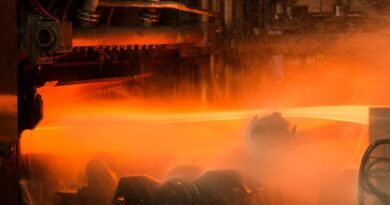Next step for carbon free, hydrogen-based direct reduction
The Hydrogen based fine-ore reduction HYFOR pilot plant developed by Primetals Technologies has been commissioned at the voestalpine site in Donawitz in Austria.
The HYFOR pilot plant employs the world’s first direct reduction process for iron ore fines concentrates from ore beneficiation, not requiring any agglomeration like sintering or pelletizing. This reduces CAPEX and OPEX costs. HYFOR represents the only process worldwide capable of processing iron ore concentrate fines with 100% particle sizes smaller than 0.15 mm, and a wide variety of ores, e.g. hematite and magnetite, supplied by different customers of Primetals Technologies worldwide.
The direct reduction plant will come in a modular design, allowing for a tailor-made scaling for customers for all sizes of steel plants. The aim of the HYFOR pilot plant is to verify this break-through process and to serve as a testing facility to provide the data basis for upscaling the plant size to an industrial-scale prototype plant as the next development step.
The HYFOR pilot plant consists of three parts: a preheating-oxidation unit, a gas treatment plant and the actual reduction unit. In the preheating-oxidation unit, fine ore concentrate is heated to approx. 900 degree Celsius and fed to the reduction unit.
The reduction gas, 100% H2, is supplied over the fence from a gas supplier. A dry dedusting system takes care of dust recycling to prevent emissions from the processes involved. The hot direct reduced iron HDRI leaves the reduction unit at a temperature of approx. 600 degree Celsius before it’s cooled down and discharged from the HYFOR pilot plant. The next step will be the addition of a Hot Briquetting Testing facility to produce Hot Briquetted Iron
First tests have been successfully executed in April and May 2021. The scale of one test run is in the range of processing of 800 kg iron ore. The HYFOR pilot plant shall be operated for at least 2 years in multiple campaigns to test various ore types and to evaluate the optimal process parameters for the next scale up step.




